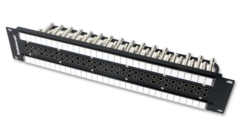
Jack Uldrich
Jack Uldrich, president, The NanoVeritas Group. The NanoVeritas Group is a Minneapolis-based nanotechnology leadership and technology consultancy. Uldrich addressed the future of nanotechnology in pro AV at the 2006 Harman Professional Global Business & Technology Conference in January.
Jack Uldrich, president, The NanoVeritas Group. The NanoVeritas Group is a Minneapolis-based nanotechnology leadership and technology consultancy. Uldrich addressed the future of nanotechnology in pro AV at the 2006 Harman Professional Global Business & Technology Conference in January.
Pro AV:Does the pro AV industry need to watch nanotechnology developments?
Uldrich: Absolutely. They should be aware of it, and should also be watching developments. Nanotechnology is the manipulation of atoms and molecules to make new things. This has broad implications in the material science field, which allows us to essentially create new materials with very specific properties. What we should be able to do with a wide variety of materials is to tweak those materials to give them increased strength, increased acoustic properties, enhanced thermal properties, or combine all of those properties into a single material. Today in the AV industry, if you want a certain property, you usually have to make a tradeoff. In the future, nanotechnology will allow us to develop very specific materials that meet the specific needs of the pro AV community.
Pro AV:What are carbon nanotubes, and how could they eventually affect AV equipment?
Uldrich: Essentially, carbon nanotubes are super small, super strong materials that are 100 times stronger than steel, but have 1/6th the density of aluminum. They’re amazingly strong, but very light. They’re imbued with a host of very significant properties, such as wonderful electrical conductivity. In the AV community, the ability to replace paper, polypropylene, aluminum, Kevlar, etc. in some of the cones, domes, and other diaphragm materials of loudspeakers is a real possibility. Beyond audio components, carbon nanotubes should be able to be put in flexible plastics to create very vivid flat-panel displays. Not only will the picture be brighter and clearer, but you’ll be able to see it from virtually any angle. Today if you’re at a stadium and the screen is head-on, you don’t have any trouble seeing it, but as you begin to move to the sides, your vision becomes impaired. The viewing angles will be significantly improved. Lastly, if carbon nanotubes can be mixed in with flexible electronics, enabling visual displays to go around corners or create shapes will be a very real possibility.
Pro AV:How far away is nanotechnology from impacting the AV marketplace?
Uldrich: The material science applications are here today, and they’ll only get better in the future. As far as manipulating materials, think of a lump of coal and a diamond ring. Both are made from carbon atoms, but a lump of coal is just a cheap energy source, and diamonds are very expensive. Because they’re both made from carbon atoms, two companies can now grow two-carat diamonds over night that are molecularly more perfect than the diamonds being mined out of South Africa. If we’re already growing diamonds that are better than the ones we’ve been using for hundreds of years, we’ll see a lot of other improvements with steel, aluminum, Kevlar, etc. Carbon nanotubes are anywhere from three to seven years away. The proof of principle has been demonstrated, and the industry is very confident that it will be able to do all of these things. The sticking point right now is manufacturing the nanotubes in a scale and volume that can be employed by the industry. They’re also trying to make sure they can grow every carbon nanotube exactly the same, so it performs in precisely the way the industry wants it to every time, but they’re not quite there yet.










